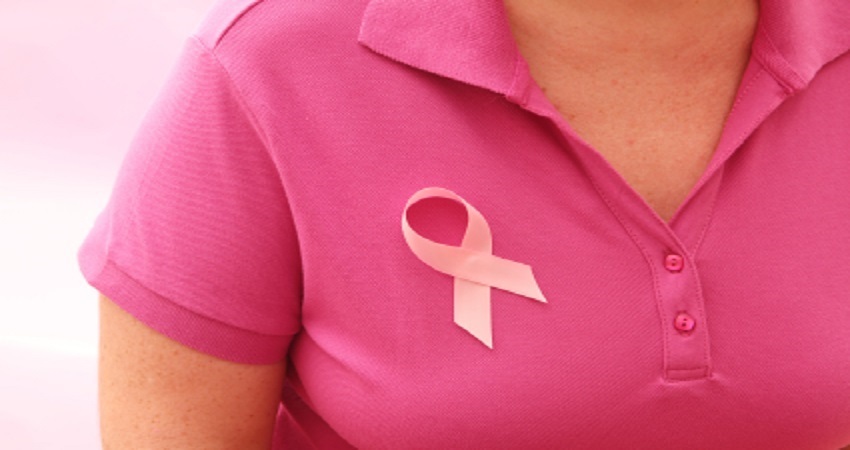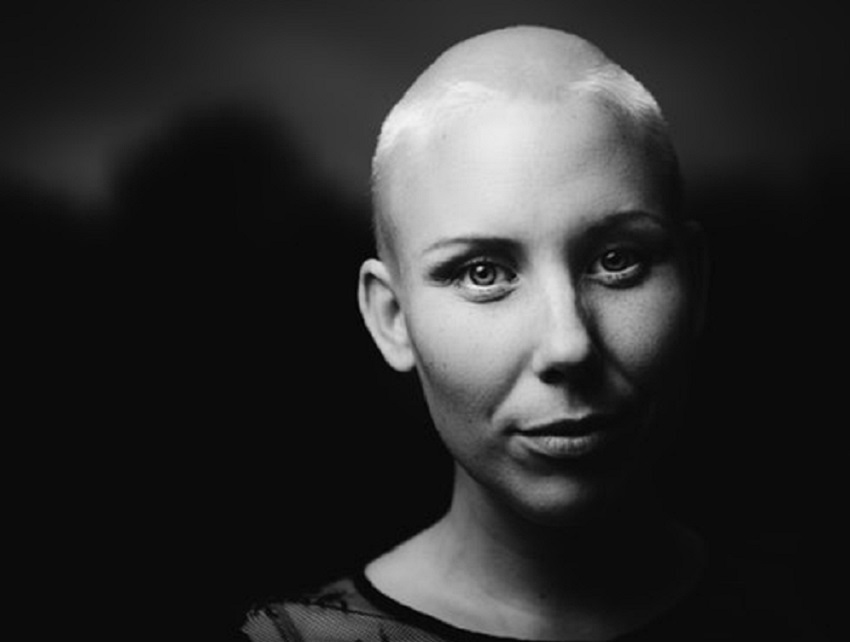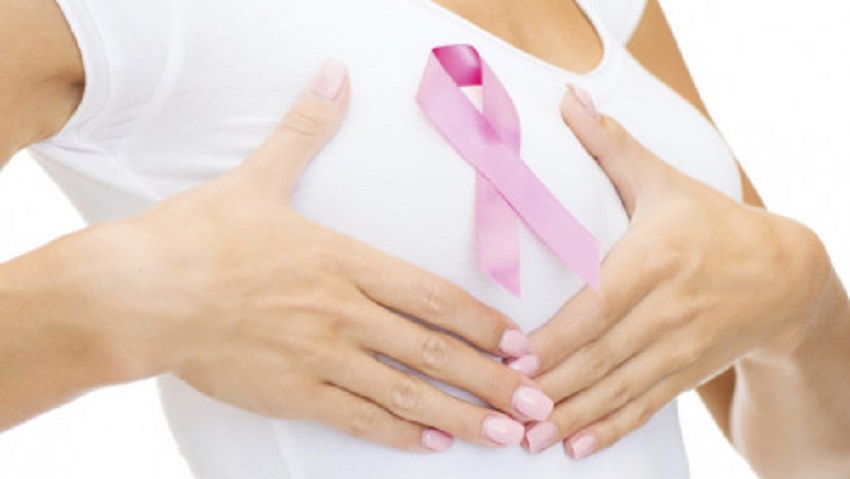Breast Cancer

Breast cancer is increasing
It is an indisputable fact that breast cancer is on the increase throughout the world.
(1) Recent research indicates that one of the causes of this upsurge is abortion.
(2) Termination of pregnancy interrupts the growth and hormonal changes that allow the breast to produce milk, leaving the breast tissue at an increased risk of malignant change.
References
1. Prof Cuzick J, University of London, Statistics in Medicine, Vol 23, Issue 7, 2002
2. Brind J et al, "Induced Abortion as an Independent Risk Factor for Breast Cancer, a comprehensive review and meta-analysis”, Journal of Epidemiology and Community Health 50: 481-496, 1996
Woman wins case on Breast Cancer link
In January 2002, in the first case of its kind in the world, an Australian woman reached a settlement with an abortionist she had sued for failing to inform her about the research linking abortion to breast cancer. The woman involved in the case could not be identified because of a confidentiality clause.
At the time of the settlement another similar case was pending in New South Wales, Australia. The award, which included substantial damages for psychological distress, was settled out of court when it was revealed that the abortionist was fully aware of the cancer link.
Link between abortion and breast cancer
The biological link
A woman's first full pregnancy causes hormonal changes which permanently alter the structure of the breast. When a pregnancy is ended prematurely this process is interrupted. Instead of the breast returning to normal, as it would after birth, abortion leaves millions of breast cells suspended in transitional states. Studies on both animal and human tissue show that cells in this state face exceptionally high risks of becoming cancerous.
Dr Charles E Simone explains the etiology of Abortion-Breast Cancer in his book Breast Health (3)
"When conception occurs, hormonal changes influence the breast. The milk duct network grows quickly to form other networks that will ultimately produce milk. During this period of tremendous growth and development, breast cells are undergoing great change and are immature or 'undiffer- entiated'; hence, they are more susceptible to carcinogens. But when a first full-term pregnancy is completed, hormonal changes occur that permanently alter the breast network to greatly reduce the risk of outside carcinogen influence. When a termina- tion occurs in the first trimester, there are no protective effects, and many of the rapidly dividing cells of the breast are left in transitional states...... It is in these transitional states of high proliferation and undifferentiation that these cells can undergo transformation to cancer cells."
When conception occurs for the first time, oestrogen and other hormones flood the mother's system causing her breast cells to undergo massive growth. Around the end of the first trimester of pregnancy the hormone balances in the woman's body change. Oestrogen levels drop and the levels of other hormones begin to rise.
The growth phase of the breast ends and a new phase of differentiation begins, continuing until the child is born. Cell differentiation is the process whereby cells become specialised, transforming into various organs and tissues of the body. Once specialised, cells are less likely to turn cancerous.
First trimester abortions interrupt the breast maturation process at the worst possible time. When cells are reproducing at their fastest, such as during breast maturation, the likelihood of an error is at its highest. It is thought that these reproductive errors cause cancer.
The statistical link
Studies strongly suggest that pregnancies which fail to continue to term are associated with a significantly increased risk of breast cancer. (4) The increase in risk is statistically significant. An analysis of all studies done to date indicates that women whose pregnancies end prematurely have a cancer risk that is 50% greater than women who carry their pregnancies to term. This figure was first suggested by Dr Janet Daling, a research epidemiologist from the United States. In 1994 she published a study in the Journal of the National Cancer Institute revealing that women who underwent an induced abortion had a 50% greater chance of developing breast cancer than women who had not previously aborted. (5)
Significantly, Daling separated out women who had suffered a spontaneous abortion (miscarriage) and found they had no increased risk of breast cancer. Dr Daling's findings are not one of a kind. There have now been 33 epidemiological studies worldwide, of which 27 show a higher risk of breast cancer in women who underwent induced abortion. (6)

Age at first abortion
Some of the abortion-breast cancer studies have also looked at the question of whether a woman who has an abortion at a very young age faces a significantly higher risk of developing breast cancer in later life.
Because the rate of cell proliferation is likely to be higher in younger people, Daling and her colleagues have suggested that the greater risk of breast cancer for women younger than eighteen at the time of their first abortion may be real, and deserves further investigation.
Evidence from a number of different independent sources all converge to the same conclusion: abortion dramatically increases the risk of breast cancer. Women have the right to have this information relayed to them. When a woman is in care and an abortion is being advised by her carers, they have a responsibility to inform her of this serious risk.
References
3. Dr Simone C E, "Breast Health: What you need to know," 1995, Avery Publishing, TN USA, 1995, Page 147
4. Lipworth L et al, "Abortion and the Risk of Breast Cancer : A Case-control Study in Greece," International Journal of Cancer 61: 181-184, 1995
5. Daling J R, Malone K E, Voigt L F, White E, Weiss N S, "Risk of Breast Cancer among young women, relationship to induced abortion," Journal of National Cancer Institute 1994 Nov (2); 86 (21): 1584-926. (27 studies that link abortion to breast cancer)
6A. Segi M, Fukushima I, Fujisaku S, Kurihara M, Saito S, Asano K et al, "An epidemiological study of cancer in Japan," GANN 48, Supplement (April 1957):1-43
6B. Watanabe H, Hirayama T, "Epidemiology and clinical aspects of breast cancer," (translation of Japanese title), Nippon Rinsho 1968 Aug; 26(8); 1843-1849
6C. Dvoirin V, Medvedev A B, "Role of Women's reproductive status in the development of breast cancer," Methods and Progress in Breast Cancer Epidemiology Research, 1978, Moscow: Oncology Science Centre of the USSR Academy of Sciences 1978, p 53-63
6D. Pike M C, Henderson B E, Casagrande J T, Rosario I, Gray G E, "Oral contraceptive use and early abortion as risk factors for breast cancer in young women", British Journal of Cancer 1981 Jan;43(1):72-6
6E. Nishiyama F, "The epidemiology of breast cancer in Tokushima Prefecture," Shikou Ichi 1982;38:333-43
6F. Brinton L A, Hoover R, Fraumeni Jr J F, "Reproductive factors in the aetiology of breast cancer," British Journal of Cancer 1983 Jun; 47(6):757-762
6G. Le M, Bachelot A, Doyon F, Kramer A, Hill C, "Oral contraceptive use and breast and cervical cancer: preliminary results of a French case-control study", Hormones and Sexual Factors in Human Cancer Aetiology, eds Wolf J-P and Scott J S, 139-47, Amsterdam: Elsevier, 1984
6H. Hirohata T, Shigematsu T, Nomura A M, Nomura Y, Horie A, Hirohata I, "Occurrence of breast cancer in relation to diet and reproductive history: A case control study in Fukuoka, Japan," National Cancer Institute Monograph 1985 Dec:187-190
6I. Rosenberg L, Palmer J R, Kaufman D W, Strom B L, Schottenfeld D, Shapiro S, "Breast cancer in relation to the occurrence and time of induced and spontaneous abortion," American Journal of Epidemiology 1988 May; 127(5): 981-989
6J. Luporsi (1988) "unpublished" and referenced in British Journal of Cancer 72-744-51.
6K. Rohan T E, McMichael A J, Baghurst P A, "A population based case-control study of diet and breast cancer in Australia," American Journal of Epidemiology, 1988; 128(3): 478-89
6L. Ewertz M, Duffy S W, "Risk of breast cancer in relation to reproductive factors in Denmark," British Journal of Cancer 1988 Jul;58(1):99-104
6M. Howe H L, Senie R T, Bzduch H, Herzfeld P, "Early abortion and breast cancer risk among women under age 40," International Journal of Epidemiology 1989 Jun; 18(2):300-304
6N. Laing A E, Demanais F M, Williams R, Kissling G, Chen V W, Bonney G E, "Breast cancer risk factors in African-American women: the Howard University Tumour Registry experience," Journal of the National Medical Association 1993 Dec;85(12):931939
6O. Laing A E, Bonney G E, Adams-Campbell L et al, "Reproductive and lifestyle factors for breast cancer in African-American women," Genetic Epidemiology 1994;11:285-310, p 300
6P. Andrieu N, Clavel F, Gairard B, Piana L, Bremond A, Lansac J, Flamant R et al, "Familial risk of breast cancer and abortion," Cancer Detection and Prevention, 1994, 18(1):51-55
6Q. Daling J R, Malone K E, Voigt L F, White E, Weiss N S, "Risk of breast cancer among young women: relationship to induced abortion," Journal of the National Cancer Institute, 1994 Nov(2); 86(21):1584-92
6R. Lipworth L, Katsouyanni K, Ekbom A, Michels K B, Trichopoulos D, "Abortion and the risk of Breast Cancer: A case-control study in Greece," International Journal of Cancer 61, 1995, Apr 61(2):181-184
6S. Bu et al, American Journal of Epidemiology, 1995, 141:S85 (abstract)
6T. Newcomb P A, Storer B E, Longnecker M P, Mittendorf R, Greenberg E R and Willett W C, "Pregnancy termination in relation to risk of breast cancer", Journal of American Medical Association, 1996 Jan;275(4):283-7
6U. Rookus M A, Van Leeuwen F E, "Induced abortion and risk of breast cancer: reporting (recall) bias in a Dutch case-control study," Journal of the National Cancer Institute, 1996 Dec4;88(23);1759-1764
6V. Brinton L A, Daling J R, Liff J M, Schoenberg J B, Malone K E, Stanford J L, "Oral contraceptives and breast cancer risk among younger women," Journal of the National Cancer Institute 1995 Jun7;87(11):827-835
6W. Talamini R, Franceschi S, La Vecchia C, Negri E, Borsa L, Montella M et al, "The role of reproductive and menstrual factors in cancer of the breast before and after menopause," European Journal of Cancer 1996, 32A(2):303-310
6X. Melbye M, Wohlfahrt J et al, "Induced abortion and the risk of breast cancer," New England Journal of Medicine 1997, 336:81-85
6Y. Palmer J, Rosenburg L, Rao R, Zauber A, Strom B, Warshauser M et al, "Induced and spontaneous abortion in relation to risk of breast cancer (United States)," Cancer Causes and Control 1997; 8:841-849
6Z. Marcus P M, Baird D D, Millikan R C, Moorman P G, Qaqish B, Newman B, "Adolescent reproductive events and subsequent breast cancer risk," American Journal of Public Health 1999; 89(8):1244-7
6AA. Lazovich D, Thompson J, Mink P, Sellars T, Anderson K, "Induced abortion and breast cancer risk," Epidemiology 2000;11:76-80

Studies on the abortion and breast cancer link
Dr. M. C. Pike, at the University of Southern California in 1981, published the first serious scientific study that demonstrated a direct association of induced abortion with later breast cancer. He studied 163 women who developed breast cancer before age 33, and compared them with 272 controls. He showed that if a woman had aborted her first pregnancy, her chance for developing breast cancer was increased by a factor of 2.4 times.Pike MC, Henderson BE, Casagrande JT, Rosario I, Gray CE (1981) Brit. J. Cancer, 43:726.
Certainly one of the definitive studies was by H. L. Howe. Her study was done in upstate New York using official statistics from the New York State Health Department. This was an excellent study by epidemiologic standards and was not subject to any kind of recall memory bias from people asked in questionnaires. It used only hard data.
She investigated all the women in this area who developed breast cancer under age 40 and checked to see whether or not they had had abortions. The conclusion was that women who had aborted their first pregnancy had a 1.7 times increased risk of breast cancer. Those who had gone on to abort their second and/or third pregnancy had a 4.0 times increased risk.Howe HL, Senie RT, Bzduch H, Herzfeld P (1989) et al., Int. J. Epidemiol. 18:300
Another was in Washington State: Few studies on this issue receive media attention. This went worldwide and broke the defacto embargo on reporting the abortion / breast cancer link. Janet Daling did a very professional study that could not be discounted. It found:
An induced abortion raises a woman's chance of getting breast cancer before the age of 45 by 50%. If done before the age of 18, it increases 150%; if after the age of 30, it's up 110%.
- A woman with a family member with breast cancer who had her first abortion after 30 years increased her risk 270%.
- All 12 women in the study with a family history of breast cancer, who aborted before the age of 18 - all 12 - got breast cancer before 45.
J. Daling, Risk of Breast Cancer Among Young Women, J. Nat. Ca. Inst., Vol. 86, No. 21, 11/2/94, pg. 1584
Other studies done since then include Greece: An overall increased risk of 51% was reported in women who had abortions, compared to those who did not. It involved 850 patients in Athens.L. Lipworth, Int. J. of Cancer, 4/95, USA
A statistically significant increased risk of 23% of breast cancer was shown to be attributable to induced abortion. For women over 60 years, the risk was 80%.P. Newcomb et al., Preg. Termination & Risk of Breast Cancer, JAMA 1/24/96, Vol. 275, No. 4, pg. 283
For a thorough explanation of the Newcomb study above, see Natl. RTL News, 2/6/96, by J. Brind. Paris: "Having at least two abortions if associated with an increased breast cancer risk" of 2.1 times.N. Andrieu, Role of Genetic & Repro. Factors in Br. Ca., Genetic Spidem. 11 (3): 285, 1994
There are, in addition, many competent studies done in the last 20 years which also confirm this linkage.
Before You Choose, The Link Between Abortion & Breast Cancer; And: Legalised Abortion and the Sudden Increase of Breast Cancer, both by Scott Somerville, P.O. Box 159, Paeonian Springs, VA 22129.
These are comprehensive analyses citing 74 studies.
Study by University of Pennsylvania on Armenian women
A study published in November 2011 examining breast cancer risk has shown a significant association between breast cancer and induced abortion, and that the risk almost tripled for women who had abortion. The study, involving 302 Armenian women, was led by Lilit Khachatryan, and included researchers from Johns Hopkins School of Public Health and the University of Pennsylvania.
The study, published in Taylor &Francis also found that delaying a first full-term pregnancy also raises the breast cancer risk whereas giving birth resulted in a 64% reduced risk.
Khachatryan's team reported a statistically significant 13% increased breast cancer risk for every one year delay of a first full term pregnancy (FFTP), with delayed FFTPs until ages 21-30 or after age 30 resulting in 2.21-fold and 4.95-fold increased risks respectively. On the other hand, women with FFTPs before age 20 did not see a comparable breast cancer risk. They wrote: "Any birth was protective (adjusted OR = 0.36, 95% CI 0.20–0.66). Each year delay in first pregnancy increased risk (adjusted OR = 1.13, 95% CI 1.01–1.27) as did induced abortions (adjusted OR = 2.86, 95% CI 1.02–8.04)."
Study on Chinese Women 2013
A new meta-analysis of studies has concluded that a single induced abortion raises the risk of breast cancer for a woman by a shocking 44 percent. The analysis, by a team of researchers led by Dr Yubei Huang, was published in the peer-reviewed journal Cancer Causes and Control, and looked at all 36 studies that have taken place in China regarding the risk of developing breast cancer for women who have had at least one induced abortion.
The risk of breast cancer soared by 44 percent, Huang found, after one abortion. After two abortions, the risk rose to 76 percent. After three, it climbed to 89 percent.
The Chinese research follows on the heels of two similar studies earlier this year. One study published in the Indian Journal of Community Medicine in May found a 6-fold greater risk of breast cancer among Indian women with a history of induced abortion when compared to the women with no such history. A similar study from Bangladesh published in the Journal of the Dhaka Medical College in April found that women with a history of induced abortion had a 20-fold increase in likelihood of developing breast cancer when compared to women with no such history.

Recurring breast cancer
This was a study in 1983 of women who had breast cancer that had been treated and gone into remission. Ownby studied how many of these developed a recurrence of their cancer. His research showed that among women who had carried their first pregnancy to term, 10% had a recurrence of their cancer within three years. Of those women who had aborted their first pregnancy 20% had a recurrence.
Among those who had aborted their second and/or third pregnancy also, 30% had recurrences.
H. Ownby, Interrupted Pregnancy Poor Prognosis . . . in Breast Cancer, 1983 Breast Cancer Res. Treat. 3:339344
Aggresiveness of the tumour
In 1991 H. Olsson studied the aggressiveness of, and the propensity to metastasize of diagnosed breast cancer. His study showed, if she had aborted her first pregnancy and later developed breast cancer, that her cancer was more aggressive and more quickly lethal than cancers among women who had carried their first pregnancy to term.
A marker gene associated with breast cancer, 1NT2, was shown to be eighteen times higher than the normal rate among those who had aborted.H. Olsson et al., Cancer 67:128590.
Miscarriage
Early on, some thought miscarraige carried the same risk, but more recent studies have shown dramatically lower levels of female hormones in those who miscarried. Among these studies were ones by B. Witt, Tulane Med. Sch. in 1990; a study in the Br. J. OBGyn. in 1976; one by D. Stewart, U. of CA Davis in 1993; one by A. Guilloume in NY City, and the well known one by Janet Daling in '94. All have shown that miscarriages are not associated with an increased risk.
Breastfeeding can protect
It would seem logical that this would be so. If maturation of the breast is what causes the protection, and if lactation in any way completes the maturing of the milk glands, then logically breast-feeding should be an additive protective factor. In fact, sufficient studies have not been done on this, and so we cannot draw any firm conclusions.
Newcomb, however, in the January 1994 New England Journal of Medicine, did find a decreased risk of premenopausal cancer among mothers who had nursed, but not among postmenopausal women. One such study, ambivalent as it is, is not enough to draw any conclusions.
Research in Journal of American of Physicians and Surgeons 2017

Breast cancer screening, which started in the 1980s, increased detection but cannot account for the continuing increase in cases, write actuary Patrick Carroll and colleagues in the spring issue of the Journal of American Physicians and Surgeons. The lifetime risk of breast cancer for women is now around one in seven for malignant tumors and one in six if in-situ lesions are included, they write.